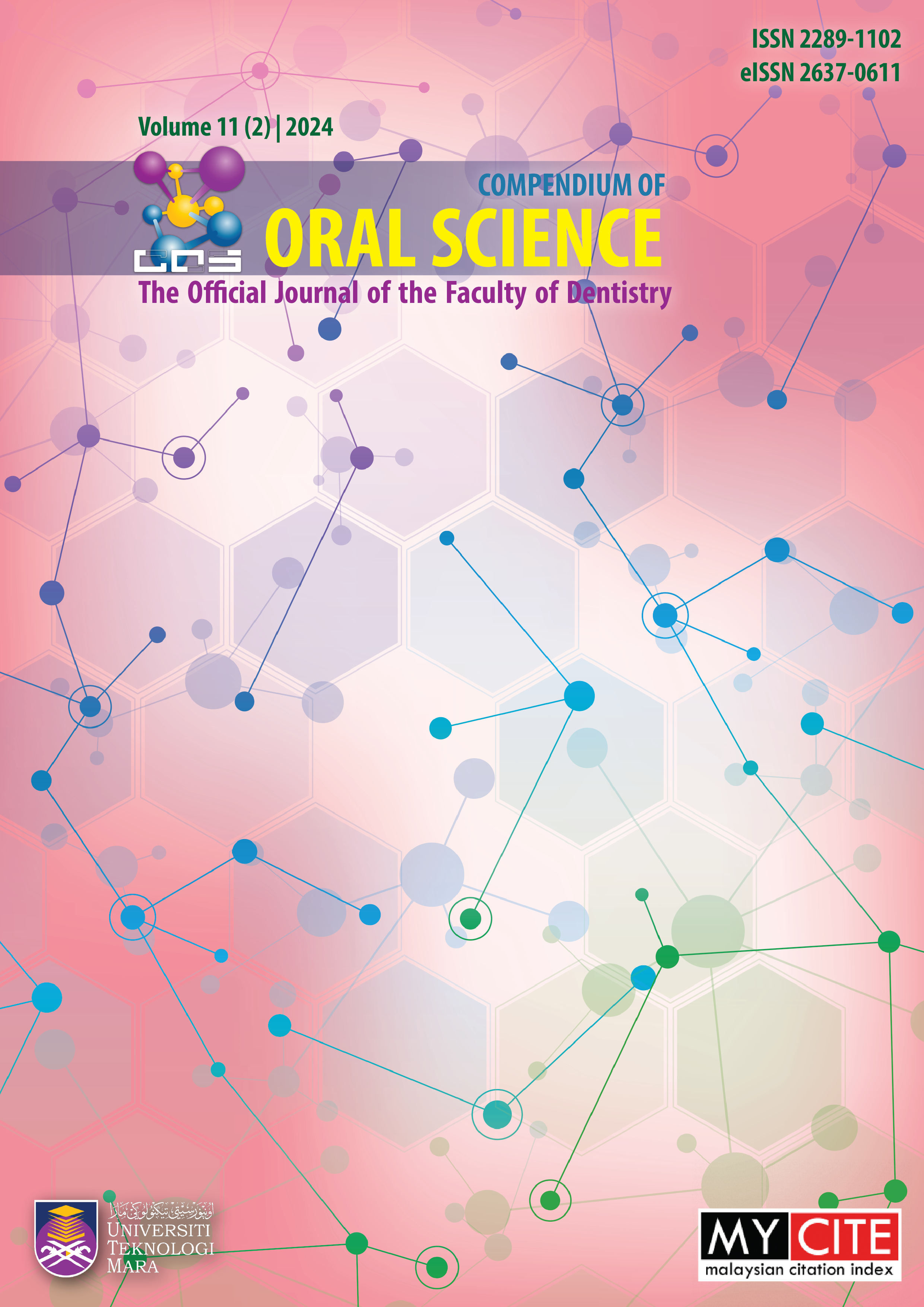Investigation on the Impact of Bisphenol A Exposure from Dental Materials: A Systematic Review
DOI:
https://doi.org/10.24191/cos.v11i2.27506Keywords:
bisphenol A, dental material, human health, adverse effect, free-BPA materialsAbstract
Bisphenol A (BPA) has been reported to have many impacts on human health due to its excessive exposure in human daily life. This includes patients that received dental treatment as they may be exposed to dental materials containing BPA. Few studies discuss the alternatives to replace BPA to reduce its exposure to humans as well as clinical practice prevention to reduce BPA leaching retained in the oral cavity. Thus, the aim of the study is to systematically review the impact of BPA exposure from dental materials on human health and to provide suggestions on the substitution of BPA with other materials or free-BPA materials. This study was performed through PubMed, ScienceDirect, and Scopus databases. The data were extracted by all authors independently and tabulated according to the topic, author, impact of BPA on human health, suggestion on substitution of BPA with other materials or free BPA materials, and limitation of the studies. About fifty-eight studies related to BPA usage in dental treatment, short- and long-term exposure of BPA, and health risk exposure to BPA were shortlisted. Almost all studies reported that BPA exposure from dental material showed negligible dosage that may not harm human health. However, there is a clear indication showing a small amount of BPA leaching from dental materials in the short term after application. About fifteen papers suggested an approach to minimize the usage of BPA materials including the introduction of free-BPA materials such as G- IEMA, ISBGBMA, TTM monomer, FDMA monomer, BCF-GMA, PCDMA and TMBPF- Ac, and prevention in clinical practice. In conclusion, BPA is known to affect human health but there is a low risk when related to BPA exposure from dental materials. However, it should not be neglected due to the lack of studies on long-term effects that may create a possible risk to human health. Therefore, suggestions on free-BPA material should be considered to reduce the exposure of BPA in humans.
Downloads
Published
How to Cite
Issue
Section
License
Copyright (c) 2024 Compendium of Oral Science

This work is licensed under a Creative Commons Attribution-NonCommercial 4.0 International License.
Materials contained in the journal may be reproduced for educational purposes provided that both the author(s) and the journal are appropriately recognised; otherwise duplication is not permitted. No articles, reports, or portions there of may be translated into other languages, published in books, journals, magazines, or any other print form without written permission from the authors and from the journal.
Disclaimer: The statements, opinions and data expressed in the articles and reports herein are those of the author(s) and not of the publisher and the editor(s). The publisher and the editor(s) disclaim responsibility for any injury to persons or property resulting from any schemes, methods, instructions or ideas referred to in the content.















